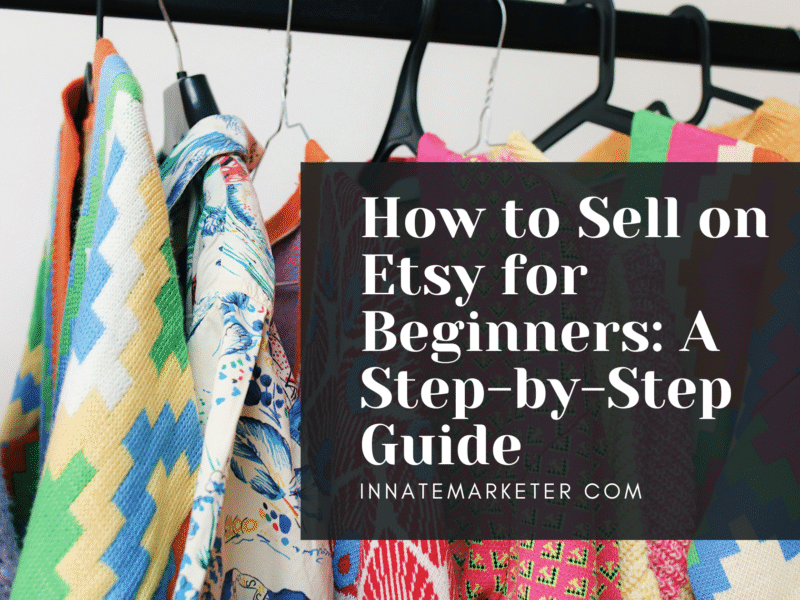Many moms want to earn extra income without leaving home or adding stress. Digital products fit busy schedules well. You create them once and sell many times. This guide shows easy digital products moms can create and sell as a side hustle. For more ideas on digital products moms can create and sell, check this helpful list from The Pink Ink.
Key Takeaway:
- Digital products let moms earn flexible side income from home.
- Popular options include printable planners, eBooks, online courses, and kid activity sheets.
- Each product type has unique pros and cons to consider before starting.
- Use easy tools like Canva and platforms like Etsy to create and sell products.
- Marketing and clear product design are essential for success.
- Time management is important—plan your work around your family schedule.
- Learning from guides and videos can speed up your digital product journey.
Why Choose Digital Products for a Side Hustle?
Digital products work well because you can create them at home anytime. There is no physical storage or shipping needed. The startup cost is low. You keep selling them without extra work. You can grow your income gradually. For busy moms, digital products fit better than many jobs. If you want tips on managing your time as a busy mom entrepreneur, read this time management guide for moms who want to start a blog.
Printable Planners and Calendars
Planners help organize busy days. Moms can create printable daily, weekly, or monthly planners. Include to-do lists, meal planners, kids’ schedules, or budget trackers.
Pros: Easy to create with free tools like Canva. High demand from organized moms. Low cost to produce and sell.
Cons: Many planners already exist, so you need a unique style. May require updates each year. Marketing needed to reach buyers. Want to learn how to sell such products effectively? Check out this guide on how to sell on Etsy for beginners.
Digital Meal Plans and Grocery Lists
Meal plans save time and stress. Moms can make themed plans like quick dinners or healthy snacks with grocery lists.
Pros: Helps busy families save time. Can bundle with recipes for more value. Popular niche for selling.
Cons: Recipes and plans must be well tested and clear. Some buyers prefer free online recipes. Requires some nutritional knowledge.
eBooks and Guides
Write ebook about your skills or experiences. Ideas include parenting tips, home organization, or budgeting for families.
Pros: Establishes you as an expert. Can be sold on multiple platforms. Low production cost.
Cons: Requires good writing and editing. Needs marketing to gain readers. Competition is high in popular topics. For a quick overview of overlooked digital products you can create, see this list on Vocal Media.
Online Courses and Workshops
Create short video courses on cooking, crafts, time management, or blogging basics.
Pros: High earning potential per sale. Builds a loyal audience. Can update content over time.
Cons: Requires video recording and editing skills. Takes longer to create than PDFs. Needs a platform and marketing. You can watch helpful video tutorials like this one on how to create online courses for passive income.
Digital Journals and Self-Care Tools
Create journals with prompts for mood tracking, gratitude, or goals.
Pros: Growing market for mental health tools. Simple to design with templates. Supports personal growth.
Cons: Needs creative, appealing designs. May require updates or variations. Marketing to the right audience is key.
Budget and Finance Trackers
Design spreadsheets to track income, expenses, and savings with easy instructions.
Pros: Useful for families managing money. Easy to create with Excel or Google Sheets. Can be customized for niches.
Cons: Some buyers may find spreadsheets complex. Needs clear instructions. May require updates for tax or finance rules.
Kid Learning Activities and Printables
Create flashcards, coloring pages, or activity sheets for kids.
Pros: Popular with homeschooling parents. Creative and fun to make. Can bundle many activities.
Cons: Needs age-appropriate design and content. Copyright concerns if using images or ideas. Buyers expect clear print quality.
Social Media and Blog Templates
Create editable Canva templates for posts or blog graphics.
Pros: Saves time for other moms and small businesses. Digital product with high demand. Easy to create with Canva.
Cons: Requires graphic design skills. Must keep templates trendy and updated. Competition from free templates online. If you want to grow your blog to promote your digital products, start by choosing the best hosting for bloggers.
Digital Stickers for Planners
Design small, themed icons for digital planners.
Pros: Growing digital planner market. Easy to create with graphic tools. Can sell bundles for higher value.
Cons: Requires graphic design skills. Must appeal to niche planner users. Some buyers want free options.
Email Templates
Create editable email templates for newsletters or sales.
Pros: Time-saving for busy business moms. High value for marketing support. Can bundle multiple templates.
Cons: Needs marketing and copywriting skill. Buyers expect professional quality. Templates must be customizable. You can learn how to build your audience and email list to sell these with this guide on how to build an email list for affiliate marketing.
Craft Patterns and DIY Guides
Write step-by-step guides for sewing, knitting, or kids’ crafts.
Pros: Appeals to creative moms. Can charge more for detailed guides. Evergreen content for crafters.
Cons: Requires clear instructions and photos. Some crafts need testing before selling. Niche market size varies.
Printable Chore Charts and Reward Systems
Make charts and stickers to motivate kids’ chores.
Pros: Popular with parents teaching responsibility. Fun, colorful designs sell well. Easy to bundle with reward systems.
Cons: Needs appealing design skills. Charts need clear, simple layouts. Buyers may want custom versions.
Digital Wallpapers and Motivational Quotes
Create phone or desktop wallpapers with positive messages.
Pros: Easy and fast to make. Popular as gifts or personal use. Can sell seasonal or themed packs.
Cons: Market saturated with free options. Must have strong design skills. Limited pricing due to simple product. Watch this video for ideas on creating and selling digital wallpapers and art: Digital Products for Passive Income.
Blogging and Affiliate Marketing Tools
Create content calendars, affiliate trackers, or email opt-in templates.
Pros: Helps other mom bloggers save time. Builds your authority in blogging niche. Can sell as bundles.
Cons: Requires blogging experience. Needs clear, easy-to-use design. Competition from free templates.
How to Start Selling Your Digital Products
Choose a platform like Etsy, Gumroad, Shopify, or your own website. Use free tools like Canva and Google Docs to create your products. Price your products reasonably for your target audience. Promote your products on social media or a blog. Keep improving your products based on feedback.

FAQs
What are digital products, and why are they ideal for moms?
Digital products are downloadable or online items like printables, eBooks, templates, and courses. They’re great for moms because they don’t need shipping or inventory. You can create them at home, sell them repeatedly, and work during nap time or after the kids are in bed. It’s a flexible way to earn income from home.
How much does it cost to start selling digital products?
The startup cost is low. You can begin with free tools like Canva and Google Docs. Etsy or Gumroad lets you sell with minimal fees. If you choose to host your own website, you can pick an affordable option—this blog hosting guide can help.
Do I need to be tech-savvy to sell digital products?
No. Most tools for creating and selling digital products are user-friendly. Canva, Etsy, and email platforms are simple to learn. You don’t need to code or be a designer. Many moms learn as they go using YouTube videos or step-by-step guides.
What digital product should I create first?
Start with something you know or enjoy. If you’re organized, create planners. If you love writing, try an eBook. Keep it simple at first. This YouTube video on product ideas is a great place to start.
Where can I sell my digital products?
You can sell on Etsy, Gumroad, Payhip, or your own website. Etsy is beginner-friendly with built-in buyers. If you want control, a personal site is great. Here’s a step-by-step Etsy guide for beginners.
Can I sell digital products passively?
Yes. Once your product is ready and listed, it can sell again and again. You’ll need to market it at first, but after that, you can make money while focusing on family. This article on passive product ideas is worth checking out.
What tools do I need to create digital products?
Start with Canva, Google Docs, or Google Sheets. These tools are easy and free. Later, you might try Adobe Illustrator or Teachable. You don’t need to buy expensive software to get started.
How do I make my digital product stand out?
Focus on solving a real problem. Use clean, attractive designs and give your product a clear title and useful description. Adding extras like checklists or bonus pages can increase value and make your product more appealing.
Can I use free images and graphics in my products?
Yes, but only from safe sources like Canva Pro or Freepik with proper licenses. Never copy from Google Images. Using properly licensed content avoids legal problems and builds a professional product.
How do I price my digital products?
Prices depend on value and effort. Printables usually sell for $3–$10. eBooks and templates can range from $7–$25. Courses can go higher. Look at similar listings and adjust based on your content and audience.
What if my first product doesn’t sell?
That’s common. You might need to change the title, design, or description. Learn from what didn’t work and try again. Many successful sellers improve by testing different products and adjusting along the way.
Do I need a blog or website to sell digital products?
Not required, but it helps. A blog gives you a place to share helpful content, attract visitors, and build trust. Over time, it can boost your visibility and sales. Learn how to set one up with this hosting guide.
Can I grow an email list with digital products?
Yes. Offer a free product or discount in exchange for an email. This lets you promote future products and build a loyal customer base. Learn how with this email list building guide.
How much time do I need to run a digital product side hustle?
Start with 30 minutes a day. Consistency matters more than time. Many moms work during nap time or after bedtime. Planning and focus help you make the most of small time slots. This time management guide for moms offers great tips.
Can I turn this side hustle into a full-time income?
Yes. Many moms grow their product line, build an email list, and increase sales over time. It takes effort, but digital products can create steady income. Read more in this guide on making $10,000 a month.

Final Thoughts
Digital products offer flexible side income for moms. Start with your skills or creativity. Pick simple products to make and grow your sales over time. For more help with selling, check this beginner guide on how to sell on Etsy. If you want to improve your time management while building your side hustle, check out this detailed time management guide for mom bloggers.





